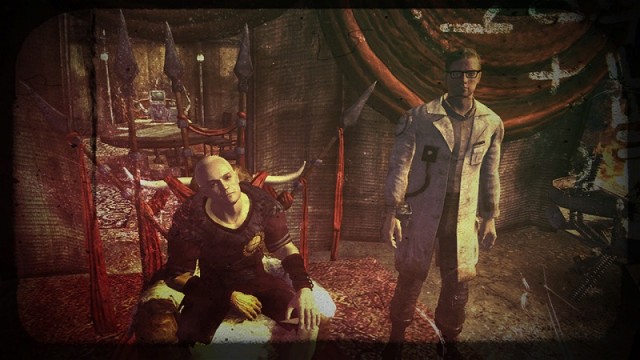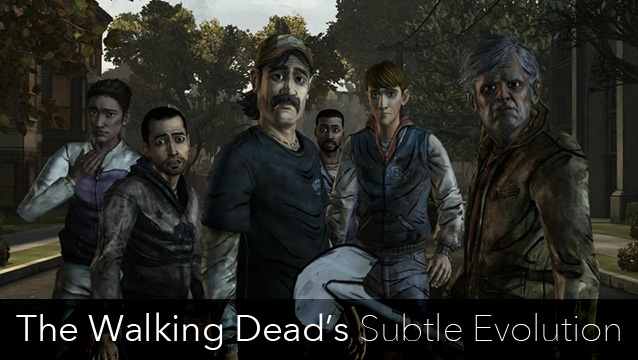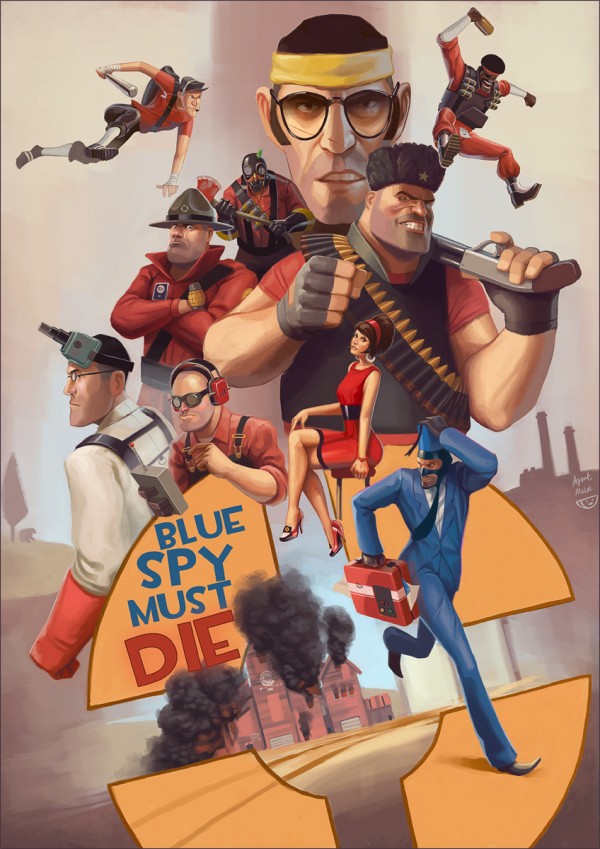

Game Rant’s Rob Keyes reviews The Elder Scrolls V: Skyrim
It’s been over five and a half years since The Elder Scrolls IV: Oblivion released into the hands’ of eager adventurers, an even longer wait than gamers were subject to between that and 2002’s Morrowind. Both games were praised by critics and fans alike for offering players a world to escape into, an open world where they could live and explore for days worth of real-time hours.
Now it’s the time to go to the northern-most province of Tamriel, the home of the Nords. Can Bethesda continue to offer the same sense of awe with The Elder Scrolls V: Skyrim? Read our review to find out.
If any game must be labeled a must-play title this busy fall season, Skyrim is it. Bethesda has done it again and successfully created what may be the most immersive, detailed and realized world ever crafted in a video game. From snow-covered mountains blasted with icy winds and the leaf-covered grounds of the autumn forests to the green rocky hills trampled on by giants and mammoths with waterways in between, Skyrim is a province that can only be compared to middle-earth from the Lord of the Rings films. It feels real as does the life within it.
The environments alone, which players may often find themselves simply wondering around in on foot or on horseback, would be enough for a cool video game, but with The Elder Scrolls this is but the tip of the proverbial iceberg. Scattered across the vast expanses of Skyrim are countless locations to be discovered, from ancient dragon burial grounds and ruins to mines, encampments, villages and more, each infused with life and adventures to go on. The architecture, landscapes and cities are unique and far more memorable than what was offered in Oblivion and this game certainly raises the bar in design.
Prepare to sacrifice real life to live the life of the Dragonborn. Skyrim begins in a similar way to previous games in the series where players step into the shoes of an unknown character with an unknown past in shackles. It is up to them to not only create the physical features of their character, but the exciting journey they shall embark on. After using the detailed character creation system and witnessing a dragon attack, it is up to the player to build their character through experience and this is where Skyrim begins to differ from its predecessors.
No experience points and gone are classes. Players level up their skills based on using them or by finding books and seeking training like in prior games. Every 10 skill points boosts the player up one level and they can then choose a perk to unlock or upgrade, restricted by what level they are at under that skill. Want to burn people faster and with more ease? Keep burning things and use those perk points to make destruction magic for fire cost less magicka and do more damage. Want to behead some bandits? Keep using one-handed weapons and unlock that critical strike perk.
It’s a simpler system that still feels familiar to The Elder Scrolls universe, but one that offers players much more direct control over the abilities and specialization of their character, while rewarding them frequently for what they do. The rewards of miscellaneous side-quests, the minor ones, are often meaningless – since, instead of improving the character with experience points like in other Western RPGs, players are rewarded with in-game items that in a lot of cases, are mostly insignificant and not worth the time spent travelling and retrieving the the quest-giver’s missing item(s) or kidnapped loved one.
This is only an issue because of the sheer amount of quests for players to fulfill and if you haven’t heard, there’s an unlimited amount of quests in Skyrim. Thankfully, the revamped menu system and journal keeps things nice, tidy and easy to manage. Major quests get their own entry with a bullet-point list of details regarding where the player is at in terms of completing the various tasks and, at the simple hit of a button, players can see where they need to go next on the game’s new and improved 3D world map. Using this map, players can fast travel to and from locations that have been discovered and by reading books or finding maps in-game, location markers will be added to the map for more places to explore.
Most minor quests fall under the ‘Miscellaneous’ category and these lack detail or the information on them which may be needed when they start to pile up. A way to read what these quests are about and who they involve would be helpful, as would be the ability to break them out on their own as a major quest with bullet points. Players not keeping track on their own and those who accept every quest they come across will be overwhelmed with the amount of questing to be had, but this is a good problem to have and goes to show how much content is available.
The main story and major guild quests are where The Elder Scrolls V: Skyrim really shines. It’s storyline pays tribute to the events of Oblivion 200 years prior and the factions players have been involved with in the past titles, so players familiar with the series will really be treated to something special, but it’s not a world that new players to the franchise need to be concerned about. Everything, and I mean everything, is explained and detailed in game and by itself, the main story behind Skyrim is truly engaging and quite simply, epic.
That being said, as solid and grand as the main quest is, as with most things Elder Scrolls, in relative terms it’s but a small yet significant piece of the puzzle and Skyrim has so many games within the game for players to enjoy. Pursuing the path of a sneaky thief, a robed mage or a heavy armored soldier are all more unique than before – thanks to the perk system and depth added to the non-combat elements of the game. Players can mine for ores, craft and improve their own weapons – and armor as well as jewelry then enchant these items with souls they capture. Animal pelts can be converted into leather and leather straps which can be combined with metals for item creation and any plant life and creature parts can be used as food and alchemy ingredients to create poisons or potions. Everything has a purpose.
Throw in companions, from a horse and a pet war dog to a bodyguard or a guild mate, along with a house and relationships – and a few other surprises – and Skyrim gives players a life to live in between the questing and dragon-slaying, but the game, like the companions players can have with them, is not perfect and there are areas that lack polish.
That immersiveness we love about The Elder Scrolls can quickly vanish on occasion thanks to weak NPC AI, some sound issues and the occasional bug. Quest-givers can go from thanking the player to hating and attacking or not even remembering them, despite previous interactions. As useful as they are in combat, companions get in the way in tight corridors and have a tough time navigating stairwells and hills. In some cases, a companion joins the player who cannot be controlled or ordered and there’s no way to be rid of them.
During our 60-hour playthrough (we’ve barely scratched the surface of certain side-quests), we encountered three quest-breaking bugs and two game freezes that forced us to load previous saves and restart the console. In an open world game as big and complex as this, AI hiccups and some of the broken NPC logic must be forgiven, but the bugs and instances where the sound effects and music totally mute important story-related dialogue (that can’t be replayed) holds back what could have been the perfect single-player game.
Unpolished animations give NPCs magically appearing instruments and broomsticks and during combat, that game will occasionally pull out to a third-person perspective for a choppy and sometimes broken kill animation. Most of the added combat animations and critical strikes however, look very cool and add to the dynamic of combat, but nothing adds more to the revamped dual-wield-friendly combat system than the dragon shouts. From learning new words and capturing dragon souls to unlock the voice of the dragonborn, this new dynamic added by Bethesda is incredible and it gives non-magic players a chance to unleash some powers of their own, while at the same time offering some very cool story elements, impressive dragon encounters and an added bonus to exploring ruins.
From a visual standpoint, the world and the creatures that inhabit Skyrim are beautiful, enhanced by incredible night-time and weather effects. There are some texture pop-ins, snow coming through some ceilings, floating items and odd lighting which makes character faces difficult to see in certain situations, but these are few and far between and do not hinder the overall experience.
Despite these issues, some of which remain from previous installments, The Elder Scrolls V is an example of when the whole is the greater than the sum of its parts. Bethesda has created something so epic, so vast and so unique that many of its issues simply must be pushed aside so gamers can experience the journey. It’s not a perfect game, though it easily could be with more polish, but it is one of the best experiences a gamer can have and for anyone who has the slightest bit of interest in a lengthy single-player title, fantasy, adventure or simply some damn good video gaming, Skyrim is the way to go. You cannot get more for your dollar in a video game and the experiences and moments Skyrim offers cannot be found elsewhere.
–
Follow me on Twitter @rob_keyes.
The Elder Scrolls V: Skyrim releases for the Xbox 360, PS3 and PC on November 11, 2011.




 Star Wars: Battlefront Wiki – Everything you need to know about the game .
Star Wars: Battlefront Wiki – Everything you need to know about the game . The Walking Deads Subtle Evolution
The Walking Deads Subtle Evolution Fantastic Team Fortress 2 Artwork
Fantastic Team Fortress 2 Artwork Skill Isnt Everything
Skill Isnt Everything Witcher 3: Hearts of Stone - How to Get the Runewright
Witcher 3: Hearts of Stone - How to Get the Runewright